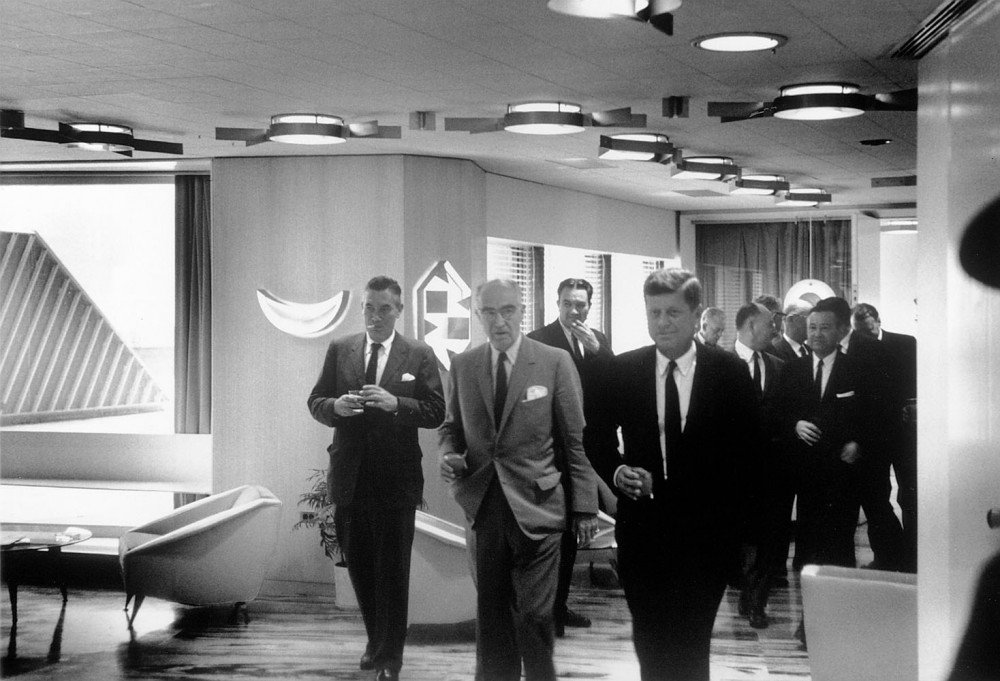Time Inc.’s fabled cocktail carts, charter planes and lavish expense accounts existed less than three decades ago, but it might as well have been the Paleozoic Era, as the violent winds of the Digital Age have spilled the drinks and caused the cash cow to run dry.
A posthumous collection by Robert Hughes, longstanding art critic for Time, is to be published this month, and Vanity Fair has run a piece about the writer enjoying a particularly expensive meal in Paris in the early ’70s. It’s an ode to the editorial independence and eye-popping perks of the Magazine Age. An excerpt:
A moment’s arithmetical reflection will show that there wasn’t the least chance of “covering” the sprawling “New York art scene.” At the very theoretical most, I had 52 articles a year. But in practice, I had nothing of the kind, because not every issue of Time had an art section. Sometimes it would be killed to make way for front-of-the-book pieces, sometimes for back-of-the-book covers; generally my allotment of stories came down to about 25, and at the very most 30, a year.
This was both a curse and a blessing. It was a curse because a lot of interesting stuff was bound to go unreported and un-noted. It was a blessing because in a week that carried no art story, I was free to work on a book, or goof off, or go fishing, or take a (liberally interpreted) “research trip.” Clearly, since I got paid every week, the blessings outweighed the curses. Being the art critic of Time in the 70s was like enjoying a perpetual research grant from the most benign of foundations. I could go more or less anywhere I wanted, look at anything I wished to, and be paid generously for doing it.
It was a very different life to that lived by critics in the “Arts & Leisure” section of The New York Times, which, compared to my own relative indolence, was all arts and practically no leisure at all. For every word I published in Time, the chief art critics of The New York Times—John Canaday, who was succeeded by Hilton Kramer and John Russell—must have pumped out three or five.
Since Time had a reputation to maintain as “the international newsmagazine,” I was not going to confine myself to New York, either. Nor would my editors have expected me to. My brief, liberally interpreted, was to cover the world. The magazine even sent me to Moscow (once) to cover an enormous retrospective of Kasimir Malevich. If there was a show in Rome or Florence, Paris or Brussels, Berlin or London, or indeed practically anywhere in Europe, a show that could be argued to hold some interest for an intelligent reader and from which two, four, or six pages of splashy color could be extracted, off I would go. I would stay in the kind of hotels I had never been able to afford—the Gritti in Venice at Biennale time, Claridge’s when in London, the Ritz in Madrid, and in Paris the Meurice—and live, without qualification or the smallest twinge of shame, the life of Riley. I knew perfectly well that this period of luxury was not going to last forever—as indeed it did not, for me or anyone else on the staff of Time—and I felt no hesitation about enjoying it while it was available; at least, in later years, when I heard some power hog from the movie industry bombing on about the truffes sous la cendre he had recently demolished at Le Park 45 during the Cannes Film Festival, I would not need to wonder what they tasted like. I, too, would have eaten them—just once. And as a matter of record, they were indeed worth eating—just that once. It is years since a Time staffer got to eat such comestibles at the company’s expense, but I did, quite often, and I cannot find an iota of shame in myself for having done so, especially since nobody on the 34th floor seemed to mind these gastronomic extravagances in the least.•




